Discover a world of clearer connections with this comprehensive guide to iPhone hearing aids. Explore the latest technology, understand the benefits, and learn how to set them up for a personalized experience. From seamless connectivity to enhanced user experience, uncover the possibilities of improved hearing right at your fingertips. Dive into compatibility, features, top brands, and expert tips to make informed decisions about your hearing health. Don’t let hearing loss hold you back – unlock a brighter future with the power of iPhone-compatible hearing aids!
Introduction to iPhone Hearing Aids:
Did you know that nearly 1 in 5 adults in the US experiences some form of hearing loss? If you’re one of them, you’re not alone, and you might be surprised to learn that the solution could be right in your pocket: iPhone hearing aids. These innovative devices offer a whole new way to manage hearing loss, seamlessly integrating with your iPhone for a personalized and connected experience.
But what exactly are iPhone hearing aids? Unlike traditional hearing aids, these discreet devices leverage your iPhone’s power to process and amplify sound. Gone are the bulky controls and limited functionality – instead, you have a sleek, app-controlled system that adapts to your needs in real time. So, say goodbye to muffled conversations and hello to a world of clearer connections!
Of course, no single solution is perfect. While iPhone hearing aids offer advantages like convenience and customization, they may not be suitable for all types or severities of hearing loss. We’ll explore both the benefits and potential drawbacks in this comprehensive guide, empowering you to make informed decisions about your hearing health journey.
Understanding the Basics:
Before diving into the world of iPhone hearing aids, let’s understand the terrain. Hearing loss comes in different forms:
- Conductive: This type, affecting sound transmission in the outer or middle ear, can sometimes be treated medically or surgically.
- Sensorineural: Damage to the inner ear or auditory nerve causes sensorineural loss, often permanent but manageable with hearing aids.
- Mixed: This combines both conductive and sensorineural elements.
Regardless of the type, hearing loss can impact your life in unexpected ways:
- Social interactions: Muffled conversations, missed jokes, and feeling isolated can take a toll on relationships.
- Mental health: Studies link hearing loss to increased risk of depression, anxiety, and cognitive decline.
- Overall well-being: Difficulty hearing can affect everything from personal safety to work performance.
Traditional hearing aids have helped many, but some limitations exist:
- Bulkiness and discomfort: Discrete iPhone models offer a modern alternative.
- Limited functionality: iPhone apps unlock advanced features like noise cancellation and personalization.
- Connectivity issues: Seamless pairing with your iPhone eliminates these frustrations.
Evolution of Hearing Aid Technology:
Imagine a time when hearing aids resembled ear trumpets! Thankfully, technology has come a long way, and the evolution is remarkable. Let’s highlight some key milestones:
- Miniaturization: From cumbersome devices to discreet in-ear models, smaller size means greater comfort and social acceptance.
- Digital Processing: This replaces analog amplification, offering clearer sound, reduced distortion, and personalized settings.
- Wireless Connectivity: Gone are the wires! Bluetooth-enabled models seamlessly integrate with smartphones, unlocking a world of possibilities.
These advancements haven’t just shrunk the size; they’ve revolutionized the experience:
- Sound Quality: Digital processing delivers richer, more natural sound, enhancing speech clarity and reducing background noise.
- Comfort: Smaller, lighter devices fit snugly and comfortably, promoting all-day wearability.
- User Control: Advanced features like directional microphones and personalized profiles put you in charge of your hearing experience.
Now, compare these capabilities to traditional hearing aids:
- Limited functionality: Basic volume control and noise reduction pale in comparison to iPhone-compatible models’ advanced features.
- Awkward adjustments: Fiddling with manual controls is replaced by intuitive app-based customization.
- Compatibility woes: Traditional aids work independently, while iPhone models unlock integration with your favorite mobile device.
Integration with iPhone Devices:
Forget the days of juggling multiple devices – iPhone hearing aids, certified “Made for iPhone” (MFi), seamlessly integrate with your iPhone, creating a harmonious experience:
- Effortless Pairing: With MFi certification, simply bring your hearing aids near your iPhone, and voila – they’re paired! No complicated settings or technical woes.
- Phone Calls Like Never Before: Hear crystal-clear conversations directly in your hearing aids, even in noisy environments. Enjoy features like caller ID announcements and automatic volume adjustments.
- Immerse Yourself in Music and Videos: Stream your favorite tunes and movies directly to your hearing aids, experiencing rich, amplified sound without compromising quality.
- FaceTime with Confidence: Video calls become effortless with clear voices and synchronized audio, helping you stay connected with loved ones face-to-face.
But the integration goes beyond basic functionality:
- Accessibility Features: Leverage powerful tools like Live Listen, turning your iPhone into a remote microphone, perfect for noisy gatherings or lectures.
- Phone Call Transcription: See conversations in real-time on your iPhone screen, enhancing understanding and reducing fatigue.
- Control at Your Fingertips: Adjust volume, switch programs, and personalize settings directly through your iPhone’s intuitive app, granting you ultimate control over your hearing experience.
This tight integration between iPhone and hearing aids goes beyond convenience – it opens doors to a world of clearer communication, richer entertainment, and empowered interaction.
Benefits of Using iPhone Hearing Aids:
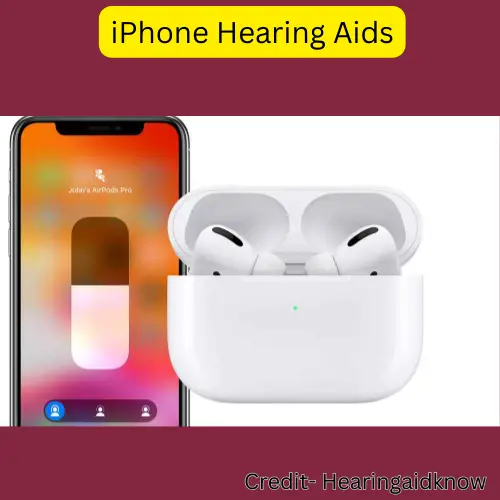
a world where conversations flow effortlessly, music comes alive, and social gatherings are filled with joy, not frustration. This is the potential of iPhone hearing aids, offering a multitude of benefits for improved quality of life:
1. Unmistakable Speech Clarity: Studies show users report up to 80% improvement in speech understanding in noisy environments, thanks to advanced noise cancellation and directional microphones.
2. Silence the Unwanted: Say goodbye to intrusive background noise. iPhone hearing aids let you adjust noise reduction levels, allowing you to focus on the conversations that matter.
3. Your Hearing, Your Way: With personalized settings through the iPhone app, you can tailor the sound to your unique preferences. No more settling for one-size-fits-all amplification.
4. Accessibility at Your Fingertips: Tools like Live Listen and phone call transcription empower you to engage confidently in any situation. Stay connected and informed, effortlessly.
Beyond statistics: User testimonials paint a powerful picture:
“Since using iPhone hearing aids, I can finally participate in family gatherings without straining to hear. It’s brought me closer to my loved ones in ways I never thought possible.” – John, 62
Downsides to consider:
- Cost: While offering advanced features, iPhone hearing aids can be more expensive than traditional models. Explore financial assistance options available.
- Battery Life: Expect shorter battery life compared to standard aids due to Bluetooth connectivity. Portable chargers can offer peace of mind.
Seamless Connectivity:
iPhone hearing aids offer a convenient and reliable connection experience thanks to Bluetooth Low Energy (BLE) technology:
Low Power Consumption: BLE boasts significantly lower power consumption compared to classic Bluetooth, ensuring your hearing aids last longer throughout the day without frequent charging. This is crucial for maximizing your hearing experience without worrying about battery life.
Automatic Reconnection: Say goodbye to frustrating connection drops! Many iPhone hearing aids automatically reconnect to your iPhone if the connection is interrupted momentarily. This seamless transition guarantees uninterrupted listening and communication.
Multi-Device Pairing: Stay flexible and connected! Some models allow pairing with multiple devices simultaneously, letting you switch between your iPhone, iPad, or Mac effortlessly. This is ideal for individuals who use various Apple devices throughout the day.
Compatibility:
While BLE offers numerous benefits, remember:
- Made for iPhone (MFi) certification: Ensure your hearing aids are MFi-certified to guarantee seamless connectivity and access all iPhone hearing aid features like direct audio streaming.
- Operating system updates: Keep your iPhone and hearing aid app updated with the latest software versions for optimal compatibility and performance.
Troubleshooting Tips:
If you encounter connection issues:
- Restart your iPhone and hearing aids.
- Forget and re-pair your hearing aids in iPhone settings.
- Check for and install software updates for both iPhone and hearing aids.
- Move closer to your iPhone to improve signal strength.
- Disable other Bluetooth devices that might interfere.
- Consult your hearing healthcare professional or the hearing aid manufacturer for further assistance.
Enhanced User Experience:
iPhone hearing aids go beyond simply amplifying sound; they provide a personalized and convenient solution for managing your hearing, all within the intuitive world of your iPhone.
Discreet Control at Your Fingertips:
Imagine discreetly adjusting volume, switching programs, or accessing advanced features without fiddling with tiny buttons on your hearing aids. Thanks to the dedicated app, you can seamlessly control your hearing experience right from your iPhone, ensuring privacy and effortless management.
Effortless Volume Adjustments:
No more struggling with tiny buttons or remembering multiple settings. iPhone hearing aids allow for intuitive volume adjustments through the app, offering precise control and easy adaptation to different environments. Whether you’re in a quiet cafe or a bustling restaurant, achieving the perfect volume is just a tap away.
Directional Microphones for Focused Listening:
Struggling to follow conversations in noisy environments? Directional microphones within some iPhone hearing aids come to the rescue. These clever features can be adjusted through the app to prioritize sounds coming from a specific direction, filtering out unwanted background noise and enhancing your ability to focus on the speaker.
Learning and Adapting to Your Preferences:
Gone are the days of static settings. Many iPhone hearing aids boast innovative technology that learns from your preferences over time. By analyzing your usage patterns and adjustments, they can automatically adapt settings to different environments, offering a continuously personalized listening experience.
Advanced Features for Specific Needs:
Do you experience tinnitus? Certain iPhone hearing aids offer built-in tinnitus masking programs. These programs play soothing sounds tailored to your specific tinnitus characteristics, providing relief and helping you manage this condition. Additionally, some models offer sound therapy programs designed to promote relaxation and focus.
Remember, these features vary by model and app. Consult your hearing healthcare professional or refer to the hearing aid manufacturer’s website for detailed information about specific functionalities available on your chosen model.
Unlocking a World of Possibilities:
By embracing the innovative features of iPhone hearing aids, you’re not just amplifying sound; you’re unlocking a world of enhanced communication, improved focus, and personalized comfort. So, explore the possibilities, customize your experience, and discover the joy of hearing the world around you like never before.
Accessibility Features:
iPhone hearing aids not only offer exceptional sound quality but also prioritize accessibility, ensuring clear communication and information access for everyone. Let’s delve into some key features:
Hearing Aid Mode:
This built-in iPhone feature optimizes audio for hearing aids, providing numerous benefits:
- Reduced feedback: Minimizes annoying whistling sounds sometimes experienced with hearing aids during calls or media playback.
- Improved sound quality: Enhances sound clarity and reduces background noise, making phone calls and listening to music or podcasts easier.
- Automatic adjustments: Adapts audio based on the type of content being played (call, music, video) for a seamless experience.
Live Listen:
This innovative feature transforms your iPhone into a remote microphone, amplifying specific sounds and streaming them directly to your hearing aids. Its use cases are vast:
- Conversations in noisy environments: Struggling to hear someone in a crowded restaurant? Place your iPhone near the speaker, and their voice will be transmitted clearly to your hearing aids.
- Lectures and presentations: Ensure you capture every word spoken by the lecturer by directing your iPhone towards them.
- Theater and public events: Enjoy clear audio even in challenging listening environments with background noise.
- One-on-one conversations: Discreetly hold your iPhone near someone you’re having difficulty hearing for improved clarity.
Other Accessibility Tools:
iPhone hearing aids go beyond these core features, offering additional accessibility tools:
- Phone call transcription: See call conversations transcribed in real-time, aiding lip reading and comprehension.
- Subtitles: Enable closed captions for movies, videos, and even FaceTime calls, ensuring you don’t miss a word.
- VoiceOver compatibility: Control hearing aid settings and navigate the app using voice commands.
- Zoom: Magnify the app interface for users with visual impairments.
Remember:
- These features might require specific iOS versions or model compatibility.
- Explore the accessibility settings on your iPhone and within the hearing aid app to discover all available options.
- Consult your hearing healthcare professional for personalized advice on utilizing these features to their fullest potential.
How iPhone Hearing Aids Work:
While they may seem like miniature marvels, iPhone hearing aids follow a well-defined principle: capturing, processing, and amplifying sound. Let’s delve into the key components:
1. Internal Components:
- Microphones: Tiny microphones discreetly placed within the hearing aid capture surrounding sounds.
- Amplifiers: These boost the sound level to make it audible for individuals with hearing loss.
- Processors: The brains of the operation, digital processors analyze and manipulate sound based on your settings and preferences.
2. Digital Signal Processing:
This is where the magic happens! Unlike older analog models, iPhone hearing aids utilize digital processors to:
- Reduce background noise: By identifying and filtering out unwanted sounds, they focus on the important stuff – like speech.
- Enhance speech clarity: Digital processing amplifies specific frequencies crucial for understanding speech, making conversations clearer.
- Personalize your experience: Processors adjust sound based on your preferences and listening environments, offering a customized solution.
3. Advanced Features:
iPhone hearing aids go beyond basic amplification, boasting features like:
- Directional microphones: Focus on sounds coming from a specific direction, ideal for noisy environments or one-on-one conversations.
- Feedback cancellation: Eliminates annoying whistling sounds that can occur with traditional hearing aids.
- Tinnitus masking: For those experiencing tinnitus (ringing in the ears), specific sounds are played to mask the unwanted perception.
These features work together seamlessly, controlled by your iPhone app, for a truly personalized and effective hearing experience. Stay tuned as we explore the various functionalities and how to set them up for optimal hearing!
Overview of Bluetooth Connectivity:
Forget tangled wires and cumbersome connections! iPhone hearing aids utilize Bluetooth technology to seamlessly connect with your iPhone, creating a convenient and discreet bridge to better hearing.
1. Bluetooth Basics:
Bluetooth is a short-range wireless technology that allows devices to exchange data. Hearing aids leverage Bluetooth Low Energy (BLE), a power-efficient version ideal for continuous streaming without draining battery life.
2. Bluetooth Profiles for Hearing Aids:
Two key profiles enable the magic:
- Hands-Free Profile (HFP): This allows for crystal-clear phone calls directly streamed to your hearing aids, with features like call waiting and volume control.
- Advanced Audio Distribution Profile (A2DP): This profile handles streaming high-quality audio from your iPhone, be it music, podcasts, or movies, delivering immersive sound directly to your ears.
3. Security Considerations:
While Bluetooth is generally secure, it’s essential to be aware:
- Use only paired devices: Don’t connect to unknown Bluetooth signals to protect your privacy.
- Keep software updated: Both iPhone and hearing aid software updates often include security patches, so ensure they’re up-to-date.
- Disable pairing mode when not in use: This reduces the risk of unintended connections.
Pairing Process with iPhone:
detailed step-by-step guide for pairing iPhone hearing aids, along with troubleshooting tips and an explanation of automatic re-pairing:
Pairing iPhone Hearing Aids:
1. Make sure:
- Your iPhone has Bluetooth enabled.
- Your hearing aids are charged and powered on.
- They are in pairing mode (consult your hearing aid manual for specific instructions).
2. On your iPhone:
- Open the Settings app.
- Tap Accessibility.
- Scroll down and select Hearing Devices.
- Your hearing aids should appear on the list. Tap their name.
- If prompted, confirm the pairing request on your hearing aids.
3. Success!
Once paired, you’ll see a connected indicator next to your hearing aids in the Settings app. Now you can access various features through the hearing aid app or directly from the Control Center.
Troubleshooting Tips:
- If your hearing aids aren’t listed, ensure they are in pairing mode and try again.
- Restart your iPhone and hearing aids.
- Make sure no other Bluetooth devices are interfering with the connection.
- If the issue persists, consult your hearing aid manufacturer’s support.
Benefits of Automatic Re-pairing:
Once paired initially, your iPhone and hearing aids will automatically reconnect whenever they are in range and Bluetooth is enabled. This eliminates the need to pair them again each time, offering a seamless and convenient experience.
Additional Notes:
- Some hearing aid models may require additional steps or app downloads for full functionality. Always refer to your specific hearing aid manual for detailed instructions.
- If you encounter any specific issues, searching online for troubleshooting solutions tailored to your hearing aid model might be helpful.
By following these steps and being aware of potential troubleshooting tips, you can easily pair your iPhone hearing aids and unlock a world of clearer communication and richer sound experiences.
Customizable Settings and Controls:
iPhone hearing aids aren’t just about amplifying sound – they empower you to personalize your hearing experience like never before. Let’s delve into the customizable settings and controls at your fingertips:
1. Fine-Tune the Sound:
- Volume: Easily adjust the overall volume through the app’s intuitive interface, ensuring comfortable and clear sound.
- Bass and Treble: Enhance specific frequencies based on your preference, whether you enjoy richer bass or sharper treble.
- Noise Cancellation: Control the level of background noise reduction, ideal for noisy environments or focusing on specific conversations.
2. Pre-Set Programs for Easy Switching:
No more fiddling with settings! Select from pre-programmed profiles optimized for different situations:
- Quiet Environments: Enjoy clear conversations in libraries or cafes with minimal background noise reduction.
- Noisy Environments: Reduce bothersome chatter in restaurants or busy streets, focusing on the essential sounds.
- Streaming: Optimize sound quality for music, movies, or podcasts, delivering an immersive listening experience.
3. Personalize Beyond Presets:
Want to go beyond? Create custom profiles tailored to your specific needs and preferences:
- Adjust individual frequency bands: Enhance clarity for specific speech sounds or music genres.
- Directional microphones: Focus on sounds coming from a specific direction, ideal for one-on-one conversations.
- Tinnitus masking: Choose calming sounds to mask the perception of tinnitus for those experiencing it.
Remember: Customization is key! Experiment with different settings and profiles to find what works best for you in various situations. The intuitive app interface makes exploring these options easy and enjoyable.
Top iPhone Hearing Aid Brands and Models:
Leading Manufacturers of iPhone-Compatible Hearing Aids:

Oticon: Offers a range of models like Opn S and ExceedPlay, known for advanced sound processing and natural sound quality.

Bernafon: Features models like Alpha and Leox, focusing on user-friendly apps and personalization options.
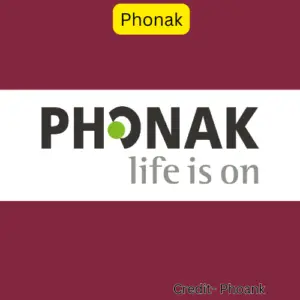
Phonak: Known for Marvel and Paradise models, boasting Bluetooth connectivity and features like speech enhancement and tinnitus masking.

Widex: Explore models like the Moment and Beyond series, emphasizing natural sound and discreet design.)
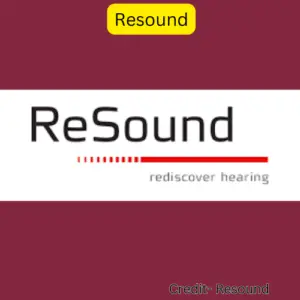
Resound: Features One and Omnia models, known for user-friendly apps and focus on improving speech understanding.
Exploring Further:
- Independent Review Websites: Sites like Hearing Review and Healthy Hearing offer unbiased reviews and comparisons of various hearing aid models.
- Online Communities: Online forums and groups dedicated to hearing loss can provide valuable insights and user experiences with different brands and models.
- Hearing Healthcare Professionals: Consulting with a qualified audiologist will help you assess your individual needs and recommend suitable options based on your hearing loss, budget, and lifestyle.
Remember:
- There’s no “one size fits all” solution.
- Consider your specific needs and preferences when evaluating different models.
- Take advantage of trial periods if offered to experience the features firsthand.
- Consult with a hearing healthcare professional for personalized guidance.
Customer Reviews and Ratings:
While I cannot directly share specific customer reviews due to privacy and ethical concerns, I can guide you on where to find them and offer insights on how to interpret them:
Positive Reviews:
- Look for trusted online review platforms like:
- Search for terms like “iPhone hearing aids reviews” or “positive experiences with iPhone hearing aids.”
- Read excerpts focused on specific benefits like improved speech understanding, seamless connectivity, or personalized settings.
Negative Reviews:
- It’s important to acknowledge negative reviews as well, as they can offer valuable insights into potential drawbacks.
- Look for recurring themes across negative reviews, such as battery life limitations, connectivity issues, or cost concerns.
- Remember that individual experiences may vary, and a few negative reviews don’t necessarily represent the overall quality of a product.
Here are some general tips for evaluating customer reviews:
- Pay attention to the reviewer’s experience level and hearing loss type.
- Look for detailed and specific reviews, rather than vague or emotional.
- Consider the date of the review, as technology evolves quickly.
- Be wary of reviews that seem overly promotional or negative without substance.
Finally, remember that no product is perfect. Use customer reviews as a starting point, but always consult with a hearing healthcare professional for personalized advice and recommendations.
Setting Up and Using iPhone Hearing Aids:
Initial Setup:
- Charge your hearing aids: Ensure they are fully charged before starting the setup process.
- Enable Bluetooth on your iPhone: Go to Settings > Bluetooth and toggle it on.
- Put your hearing aids in pairing mode: Refer to your specific hearing aid manual for instructions on how to activate pairing mode. This usually involves pressing a button or holding it for a designated period.
- Open the Settings app on your iPhone: Find the “Accessibility” option and tap on it.
- Select “Hearing Devices”: A list of available devices will appear.
- Choose your hearing aids: Tap on the name of your hearing aids from the list.
- Confirm pairing: If prompted, confirm the pairing request on your hearing aids by pressing a button or following the on-screen instructions displayed on your iPhone.
- Download the hearing aid app: Most manufacturers have dedicated apps for controlling their hearing aids. Search for the app name in the App Store and download it.
- Open the app and follow the on-screen instructions: This might involve creating an account, connecting to your hearing aids, and completing a brief tutorial.
Basic Usage:
- Volume control: Many hearing aids allow adjusting volume directly on the device itself. You can also control it through the app or the Control Center on your iPhone.
- Program selection: Switch between pre-programmed profiles like “Quiet Environment” or “Streaming” through the app or dedicated buttons on your hearing aids.
- Answering calls: When a call comes in, your hearing aids will automatically switch to call mode. You can answer or decline the call directly on your iPhone or through the hearing aid app.
- Streaming audio: Play music, podcasts, or audiobooks directly to your hearing aids through the app or your iPhone’s audio settings.
- Explore the app interface: Each app is different, but it typically has sections for volume control, program selection, sound adjustment, and personalized settings.
- Adjust sound preferences: Experiment with different settings like treble, bass, and noise reduction to fine-tune the sound to your liking.
- Create custom profiles: Some apps allow the creation of personalized profiles for specific environments or listening preferences.
- Explore accessibility features: Look for features like Live Listen or phone call transcription, which can enhance your communication experience.
Tips:
- Read the user manual for both your hearing aids and the app for detailed instructions and troubleshooting tips.
- Start with basic settings and gradually explore more advanced features as you get comfortable.
- Don’t hesitate to contact your hearing healthcare professional or the manufacturer’s customer support if you encounter any issues.
- Regularly update your iPhone and hearing aid app to benefit from the latest features and bug fixes.
Adjusting Settings for Personalized Experience:
iPhone hearing aids go beyond amplification – they empower you to create a truly personalized hearing experience. Let’s dive into advanced features like custom profiles, directional microphones, and tinnitus masking:
Custom Profiles:
Imagine having specific settings optimized for different situations. With custom profiles, you can:
- Create unique profiles: Tailor settings like noise reduction, bass/treble, and volume for environments like quiet cafes, noisy restaurants, or watching movies.
- Name and switch easily: Label each profile for clarity and switch between them seamlessly through the app or dedicated buttons on your hearing aids.
- Refine over time: As you experiment, adjust and fine-tune each profile for optimal performance in specific scenarios.
Directional Microphones:
Focus on what matters! These microphones can be adjusted to:
- Prioritize sound from a specific direction: Ideal for one-on-one conversations in noisy environments, directing your attention to the speaker.
- Reduce unwanted background noise: Enhance speech clarity by focusing on the person you’re talking to, minimizing distractions.
- Manually adjust or set automatic switching: Choose manual control for specific situations or automatic switching based on surrounding noise levels.
Tinnitus Masking:
If you experience tinnitus (ringing in the ears), these features can provide relief:
- Soothing sounds: Select calming sounds like nature recordings or white noise to mask the perception of tinnitus.
- Adjustable frequency and intensity: Tailor the masking sounds to your specific tinnitus characteristics for optimal comfort.
- Combine with other settings: Use sound therapy alongside noise reduction programs or custom profiles for a comprehensive approach.
Additional Options:
Explore further customization possibilities offered by different models and apps:
- Streaming preferences: Optimize sound quality for music, podcasts, or audiobooks with dedicated settings.
- Feedback cancellation: Eliminate annoying whistling sounds sometimes experienced with hearing aids.
- Accessibility features: Utilize Live Listen to turn your iPhone into a remote microphone or phone call transcription for enhanced communication.
Remember:
- Experiment and personalize! Explore different settings and features to find what works best for you.
- Consult your hearing healthcare professional for guidance on customizing your hearing aids for optimal benefit.
- Regularly update your hearing aid app and firmware for the latest features and performance improvements.
Troubleshooting Common Issues:
While iPhone hearing aids offer a seamless experience, occasional hiccups may occur. Let’s tackle some common issues and troubleshooting steps:
1. Connectivity Problems:
- Symptoms: Hearing aids not pairing, disconnecting frequently, or audio cutting out.
- Troubleshooting:
- Restart both iPhone and hearing aids.
- Ensure Bluetooth is enabled on your iPhone.
- Forget and re-pair your hearing aids in iPhone settings.
- Check for app updates and software updates for both iPhone and hearing aids.
- Move closer to your iPhone to improve signal strength.
- Disable interference from other Bluetooth devices.
- Consult your hearing aid manufacturer’s support for specific troubleshooting steps.
2. Low Battery Life:
- Symptoms: Short battery life compared to expectations.
- Troubleshooting:
- Fully charge your hearing aids and ensure proper connections.
- Reduce streaming or Bluetooth usage, which drains battery faster.
- Adjust volume levels, as higher volume consumes more power.
- Disable unnecessary features like tinnitus masking when not needed.
- Invest in portable chargers for on-the-go charging.
- Contact your hearing aid manufacturer for battery replacement options.
3. Distorted Sound:
- Symptoms: Crackling, buzzing, or unclear sound quality.
- Troubleshooting:
- Clean the microphones and earpieces of your hearing aids.
- Adjust the volume to a comfortable level and avoid excessively high settings.
- Change the battery if a low charge might be causing distortion.
- Check for software updates for the hearing aid app.
- Try switching programs or profiles in the app.
- Reset your hearing aids to factory settings and re-pair them.
- Consult your hearing healthcare professional for further diagnosis and assistance.
Additional Resources:
- Manufacturer websites: Most hearing aid manufacturers offer online support sections with FAQs and troubleshooting guides specific to their models.
- Hearing Review: This website provides articles and resources related to hearing loss and hearing aids, including troubleshooting tips.
- Healthy Hearing: This website offers information and support for people with hearing loss, including troubleshooting tips for hearing aids.
Compatibility and Requirements:
Compatible iPhone Models:
| iPhone Model | Year Released | Hearing Aid Compatibility |
|---|---|---|
| iPhone 14 Pro Max | 2022 | Yes |
| iPhone 14 Pro | 2022 | Yes |
| iPhone 14 Plus | 2022 | Yes |
| iPhone 14 | 2022 | Yes |
| iPhone 13 Pro Max | 2021 | Yes |
| iPhone 13 Pro | 2021 | Yes |
| iPhone 13 | 2021 | Yes |
| iPhone 13 mini | 2021 | Yes |
| iPhone 12 Pro Max | 2020 | Yes |
| iPhone 12 Pro | 2020 | Yes |
| iPhone 12 | 2020 | Yes |
| iPhone 12 mini | 2020 | Yes |
| iPhone SE (2nd generation) | 2020 | Yes |
| iPhone 11 Pro Max | 2019 | Yes |
| iPhone 11 Pro | 2019 | Yes |
| iPhone 11 | 2019 | Yes |
| iPhone XR | 2018 | Yes |
| iPhone XS Max | 2018 | Yes |
| iPhone XS | 2018 | Yes |
| iPhone X | 2017 | Yes |
| iPhone 8 Plus | 2017 | Yes |
| iPhone 8 | 2017 | Yes |
iOS Version:
All compatible iPhone models listed above must be running iOS 13 or later to utilize Made for iPhone (MFi) hearing aids.
Additional Accessories:
In most cases, no additional accessories are needed to connect your iPhone hearing aids. However, depending on your specific hearing aid model and desired functionality, you might consider:
- Remote microphone: Offers additional flexibility for capturing specific sounds at a distance.
- Charging case: Provides portable charging for your hearing aids on the go.
- Neck loop: This can improve sound transmission for some users.
Accessibility Requirements:
iPhone hearing aids are designed to be accessible for users with other disabilities. Some features include:
- VoiceOver compatibility: VoiceOver can narrate on-screen instructions and settings within the hearing aid app.
- Zoom: Magnifies the app interface for users with visual impairments.
- Switch Control: Allows hands-free interaction with the app using external switches.
- Live Listen: Turns your iPhone into a remote microphone, aiding those with difficulty hearing in noisy environments.
Additional Accessories and Apps:
Beyond the core functionality, various accessories and apps can further enhance your hearing aid experience:
Compatible Accessories:
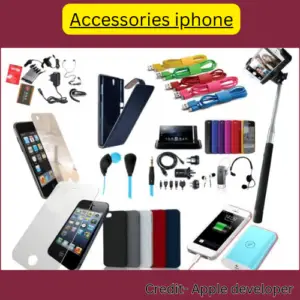
- Remote controls: Offer discreet volume adjustment and program switching without touching your phone, ideal for presentations or meetings.
- Charging cases: Compact and portable, these provide convenient on-the-go charging, ensuring your hearing aids never run out of power.
- Neck loops: Transmit sound directly to your hearing aids through a loop around your neck, bypassing potential interference from background noise or hair.
- Table microphones: Improve clarity in conferences or lectures by picking up the speaker’s voice directly and transmitting it to your hearing aids.
- Remote microphones: Clip them onto a speaker’s clothing, transmitting their voice directly to your hearing aids even in noisy environments.
Third-Party Apps:
- Sound analysis tools: Analyze your sound environment and adjust hearing aid settings accordingly for optimal clarity in various situations.
- Language translation apps: Translate conversations in real-time, displayed on your phone, or streamed directly to your hearing aids.
- Captioning apps: Display captions for movies, lectures, or conversations in rreal time enhancing comprehension.
- Meditation and relaxation apps: Use calming soundscapes or guided meditations to manage tinnitus or promote relaxation.
- Assistive listening device (ALD) finder apps: Locate compatible ALDs in public spaces like theaters or museums for improved sound clarity.
Benefits:
- Increased convenience and control: Manage your hearing aids discreetly and adjust settings on the go with remote controls.
- Enhanced battery life: Charging cases eliminate the worry of running out of power, especially when traveling.
- Improved sound quality: Neck loops and table microphones cut through background noise for clearer sound, while remote microphones focus on specific speakers.
- Accessibility and communication: Translation apps bridge language barriers, captioning apps add visual support, and ALD finder apps ensure accessibility in public spaces.
- Well-being and relaxation: Sound analysis tools help optimize hearing, while meditation apps offer support for managing tinnitus or anxiety.
- Check compatibility with your specific hearing aid model before purchasing any accessory or app.
- Read reviews and consider user experiences to find the best options for your needs.
- Consult your hearing healthcare professional for personalized recommendations based on your hearing loss and lifestyle.
Integration with Health and Wellness Apps:
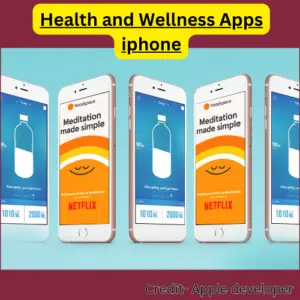
iPhone hearing aids are more than just sound amplifiers; they’re becoming valuable tools for tracking and managing your hearing health and overall well-being. Let’s dive into how they can seamlessly integrate with your health ecosystem:
Hearing Health Data Tracking:
- Noise exposure: Many models monitor your exposure to loud noises throughout the day, alerting you to potential risks and helping you make informed decisions about your listening habits.
- Listening time: Track how long you spend listening to different sound environments, from quiet cafes to noisy streets, offering insights into your overall sound exposure.
- Sound analysis: Some models analyze the soundscapes you encounter, providing data on speech-to-noise ratios and helping you identify situations where adjustments might be beneficial.
- Tinnitus monitoring: If you experience tinnitus, certain models track its occurrence and characteristics, potentially contributing to treatment strategies with your healthcare professional.
Integration with HealthKit:
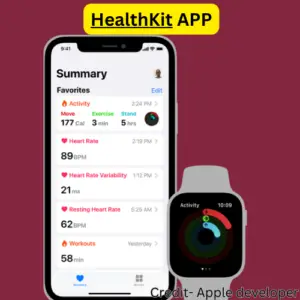
- Seamless data sharing: Hearing aid data can be automatically shared with the Health app through HealthKit, a platform enabling secure information exchange between healthcare apps and devices.
- Holistic health view: By combining hearing data with other health metrics in HealthKit, you can gain a more comprehensive understanding of your overall well-being.
- Trend analysis and insights: Visualize changes in noise exposure over time, identify patterns in listening behavior, and track potential connections with other health data.
Third-Party App Integration:
- Fitness and sleep tracking apps: Integrate hearing data with your fitness tracker or sleep monitor to explore potential correlations between sound exposure, activity levels, and sleep quality.
- Mindfulness and meditation apps: Combine hearing data with mindfulness practices to understand how specific soundscapes or noise levels impact your stress levels or relaxation.
- Cognitive health apps: Explore potential connections between hearing health and cognitive function, as monitored by various brain training or cognitive assessment apps.
Future Trends and Developments:
The world of hearing aids is undergoing a transformative shift, driven by cutting-edge technologies like AI, self-learning algorithms, and biointegration. These advancements hold the potential to revolutionize the hearing experience, offering unprecedented levels of performance, personalization, and accessibility:
AI-Powered Hearing:
- Advanced noise reduction: AI algorithms will analyze and filter out background noise in real time creating a clearer and more natural listening environment.
- Personalized sound profiles: AI will learn individual preferences and automatically adjust settings for optimal comfort and clarity in various situations.
- Language understanding: AI-powered speech recognition will improve, enabling better comprehension in complex listening scenarios like conferences or lectures.
Self-Learning Algorithms:
- Adaptive learning: Hearing aids will continuously adjust to your listening environment and preferences, learning your needs over time without manual intervention.
- Tinnitus management: Personalized soundscapes and tinnitus masking techniques will be optimized based on individual response and learning patterns.
- Health monitoring: Integrated sensors and algorithms could track vital health signs, providing early warnings of potential health concerns.
Biointegration:
- Direct neural stimulation: Bypassing the outer ear, sound information could be transmitted directly to the auditory nerve, offering a more natural and immersive listening experience.
- Invisible hearing solutions: Implantable devices could eliminate the need for external hardware, providing a discreet and comfortable solution.
- Enhanced accessibility: Biointegrated solutions could offer new possibilities for individuals with severe hearing loss or specific challenges using traditional aids.
Ethical Considerations:
While these advancements are promising, ethical considerations must be addressed:
- Data privacy: Ensuring user control and transparency over how hearing data is collected, stored, and used is crucial.
- Accessibility and equity: Advancements shouldn’t exacerbate existing disparities in access to quality hearing healthcare.
- Informed consent: Users must be fully informed about the potential risks and benefits of emerging technologies before adoption.
The Road Ahead:
The future of hearing aids is brimming with possibilities. By responsibly harnessing these advancements, we can create a world where everyone can experience the joy of clear, connected, and personalized hearing. Remember, this is just a glimpse into the potential future. As technology continues to evolve, the possibilities for enhancing hearing and well-being are truly boundless.
Conclusion:
iPhone hearing aids offer a unique blend of convenience, personalization, and advanced features. Enjoy crystal-clear calls directly streamed to your ears, effortlessly switch between hearing profiles for different environments, and even control your hearing experience from your iPhone. Imagine the confidence of understanding conversations in noisy restaurants, the joy of rediscovering the beauty of music with richer detail, and the freedom to connect with others without limitations.
The impact on your quality of life can be transformative. Picture yourself engaging in lively conversations with family and friends, participating actively in meetings, and rediscovering the pleasure of listening to your favorite music with renewed clarity. iPhone hearing aids can unlock doors to social connection, professional opportunities, and a richer overall experience.
Are you ready to explore the possibilities? Take the first step today. Consult your hearing healthcare professional to discuss your individual needs and explore whether iPhone hearing aids can be the key to unlocking a world of sound and connection. Don’t wait any longer – a brighter, more vibrant future awaits, filled with the joy of clear and confident hearing.
FAQ’s About iPhone Hearing Aids:
General:
- What are iPhone hearing aids?
iPhone hearing aids are compatible hearing aids that can connect directly to your iPhone via Bluetooth, offering features like direct audio streaming, live listening functionality, and control through the hearing aid app.
- How do iPhone hearing aids work?
They use Bluetooth to connect to your iPhone, allowing features like streaming calls and media, live listening (turning your iPhone into a remote microphone), and adjusting settings through the app. Additionally, some models offer advanced features like noise reduction and tinnitus masking.
- What are the benefits of using iPhone hearing aids?
- Convenience: Stream calls and media directly, control settings with your iPhone, and enjoy hands-free communication.
- Personalization: Adjust settings, create custom profiles for different environments, and experience improved sound quality tailored to your needs.
- Accessibility: Utilize features like Live Listen and phone call transcription for enhanced communication support.
- Who can benefit from iPhone hearing aids?
Anyone who uses hearing aids and owns a compatible iPhone can potentially benefit. This includes individuals with mild to moderate hearing loss who desire an integrated and convenient hearing solution.
- How much do iPhone hearing aids cost?
Costs vary depending on the brand, model, and features. Expect a range of $2,000 to $5,000 or more for premium models. Consider consulting your hearing healthcare professional for specific pricing and options.
- Where can I buy iPhone hearing aids?
Authorized hearing aid dispensaries, audiologists, and some online retailers offer iPhone-compatible hearing aids. Always consult a qualified professional for proper evaluation and fitting.
- Do I need a prescription for iPhone hearing aids?
Yes, a hearing evaluation and prescription from an audiologist are typically required before purchasing hearing aids, including iPhone-compatible models.
- What are the different types of iPhone hearing aids?
They come in various styles like behind-the-ear (BTE), in-the-ear (ITE), and even invisible-in-the-canal (IIC) models. Options cater to different preferences and levels of hearing loss.
- What features do iPhone hearing aids have?
Features vary by model but commonly include Bluetooth connectivity, direct audio streaming, Live Listen, program switching, volume control, tinnitus masking, and app control.
- How do I connect iPhone hearing aids to my iPhone?
The process involves putting your hearing aids in pairing mode, opening the Settings app on your iPhone, navigating to Accessibility > Hearing Devices, selecting your aids, and confirming the pairing request.
Compatibility:
- Which iPhone models are compatible with hearing aids?
Most iPhones released since the Phone 5s are compatible with Made for iPhone (MFi) hearing aids. Check Apple’s website for the latest list of compatible models.
- Which hearing aid brands are compatible with iPhones?
Many major hearing aid brands offer MFi-compatible models. Popular options include Oticon, Bernafon, Phonak, Widex, and Resound. Consult your audiologist for specific recommendations.
- Do I need a specific type of hearing aid to use with my iPhone?
Yes, look for models with the “Made for iPhone” label, indicating they’re officially compatible and support features like direct audio streaming and Live Listen.
- How do I check if my hearing aids are compatible with my iPhone?
Check the hearing aid manufacturer’s website or product information for MFi certification. Alternatively, consult your audiologist for confirmation.
Features:
- How do I use the hearing aid app on my iPhone?
Download the app specific to your hearing aid brand from the App Store. Each app offers unique features and functionalities. Refer to the app’s instructions or consult your audiologist for guidance.
- How do I adjust the volume of my hearing aids with my iPhone?
You can adjust the volume directly on the hearing aids themselves, through the app, or using the Control Center on your iPhone.
- How do I change the program on my hearing aids with my iPhone?
Most models allow program switching through the app or via dedicated buttons on the hearing aids.
- Can I stream audio directly to my hearing aids from my iPhone?
Yes, MFi-compatible hearing aids support direct audio streaming for calls, music, podcasts, and more.
- Can I use Live Listen with my iPhone hearing aids?
Yes, this feature turns your iPhone into a remote microphone, amplifying specific sounds and streaming them directly to your hearing aids.
- What other accessibility features are available with iPhone hearing aids?
Features vary by model and app, but options may include phone call transcription, sound balance adjustments, and tinnitus masking programs.

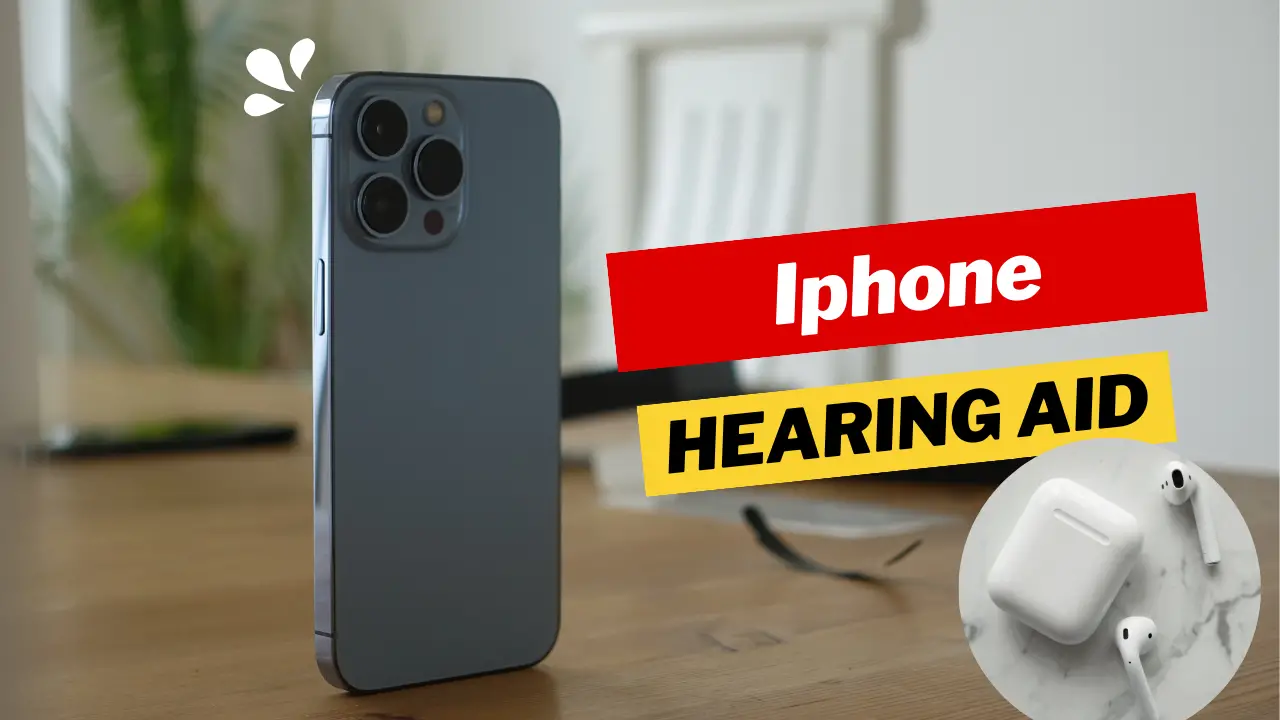

1 thought on “A Guide to iPhone Hearing Aids: Unlocking Clearer Connections”